
The Ten Best Drought Tolerant Plants
If you live in a dry region or one that suffers from high drought risk, such as the southwestern United States, choosing the right plants for your yard or garden can be difficult. Fortunately, there are many drought tolerant plants of different heights, textures, and shapes that can add a splash of color and dimension to your landscape, while requiring minimal watering.
What are drought tolerant plants?
Drought tolerant plants, also known as drought resistant plants, are plants that can withstand long periods of dryness. They are typically found in areas in the US with drier climates such as Phoenix, AZ, or in the prairie provinces of Canada in cities such as Edmonton, AB. Drought resistant plants can typically last weeks without water, if not an entire season which can help conserve water usage outdoors. So if you live in a dry area, check out this list of 10 drought tolerant plants for dry climates.
Renovating your home?
Find out what your home's worth, edit facts, and see the impact of home projects.
1) Cactus
Renovating your home?

Botanical Name: Cactaceae
USDA Hardiness Zones*: 9-11
Plant Type: Succulents (With some exceptions)
Native Area: Rainforests and deserts around the world
Soil Ph: 5.5-7.0
One of the most versatile and durable drought tolerant plants, the cactus is a reliable plant with thousands of different species. Cacti fall into two broad categories: desert and forest. Desert cacti are more traditional that have thick spines and can grow paddles, balls, or obelisks. They produce beautiful blooms during the spring and summer. Forest cactus are not as hardy and are native to forests and jungles.
Cacti typically survive all four seasons. When taking care do not overwater, as cacti store water in their stems. Provide a good soil mix or organic and inorganic materials of sand, pumice, and perlite to create holes, as well as coconut, bark, and peat moss. About 8 hours of light is essential for desert cacti while forest cacti require bright, indirect sunlight.
2) Aloe Vera
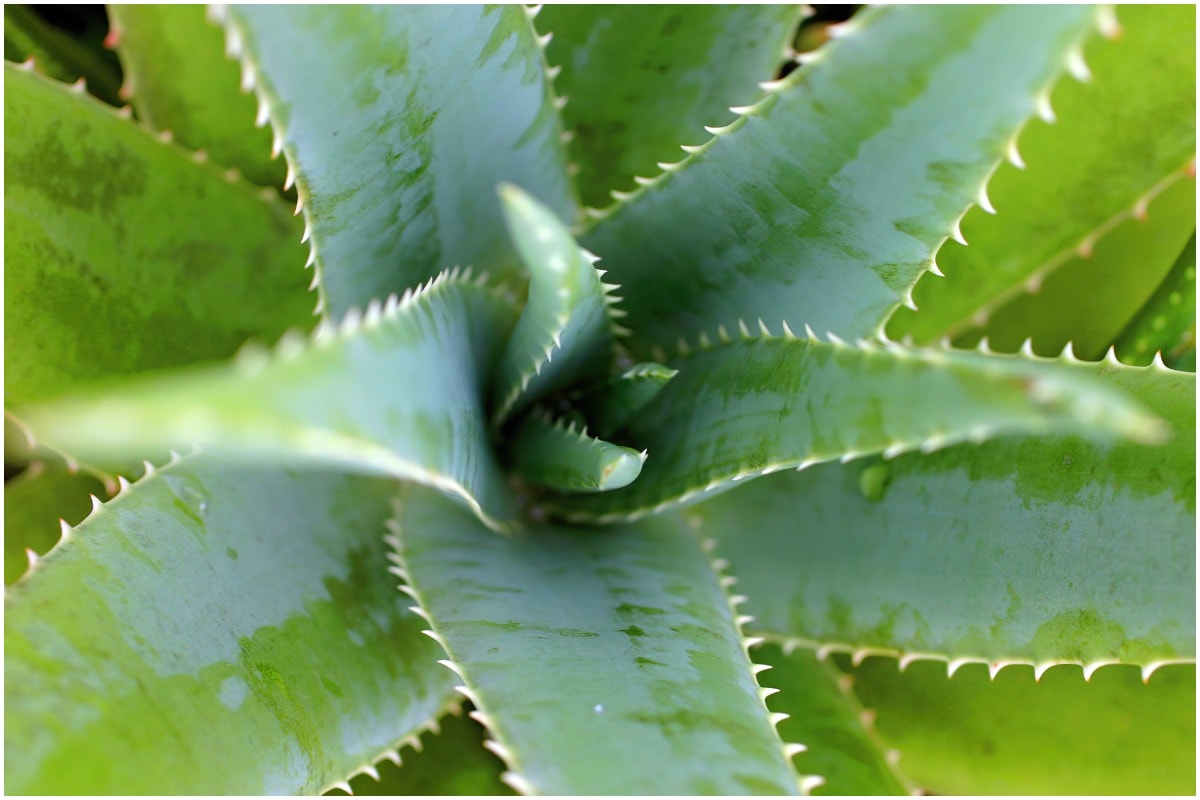
Botanical Name: Aloe barbadensis miller
USDA Hardiness Zone*: 10-12
Plant Type: Succulent
Native Area: Africa, Madagascar, and the Arabian Peninsula
Soil Ph: 7.0-8.5
Aloe Vera, which is derived from the genus Aloe, is a cactus-like succulent that typically grows in hot and dry climates. Originally native to Africa, these short-stemmed, drought tolerant plants fan out from a central stem and possess thick green leaves that contain a watery gel. It is a fast-growing, drought resistant plant that takes about 3 to 4 years to mature.
Aloe Vera can grow in poor soil, but requires bright, indirect sunlight for 6-8 hours a day as direct light can potentially burn its skin. These succulents are best planted alone in a pot or a well-drained bed. While they require minimal watering, they do prefer to be watered regularly to prevent their leaves from drying and shriveling up. If you would like to plant additional Aloe, this plant can be propagated by cutting off a few leaves and planting the offshoot.
3) Agave
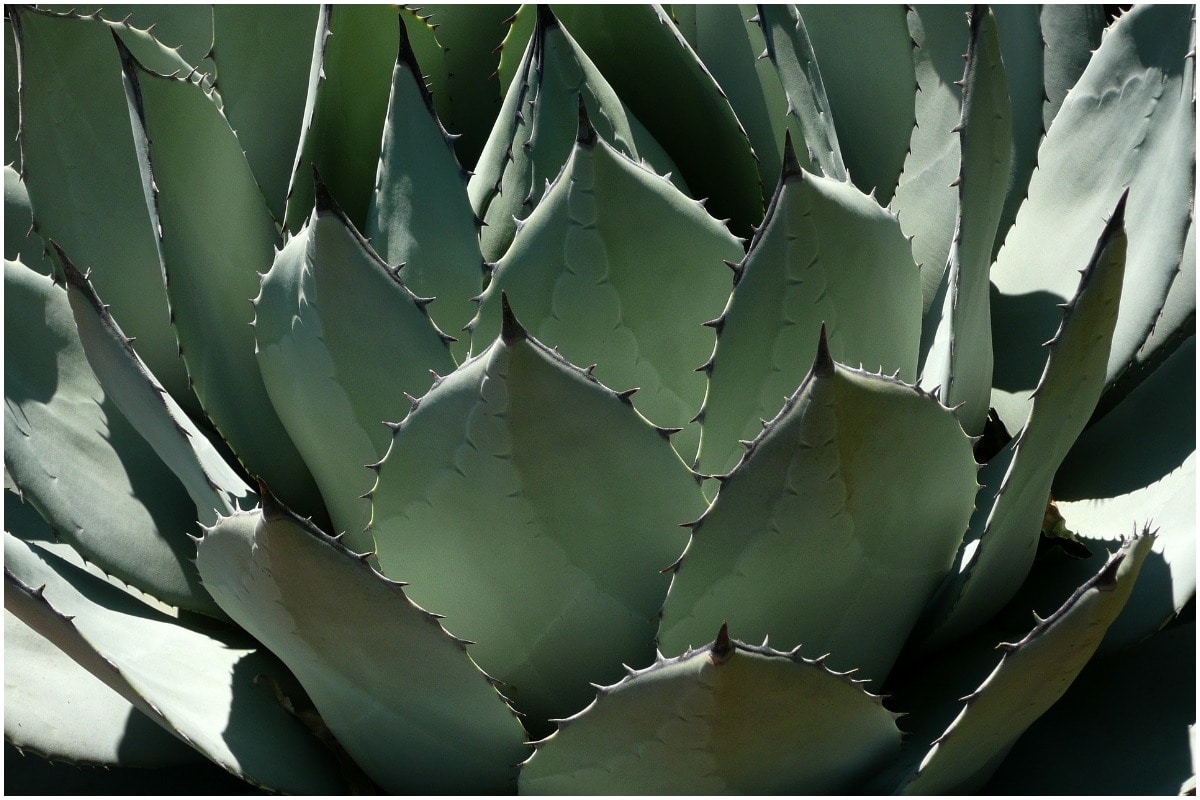
Botanical Name: Agave
USDA Hardiness Zone*: 5-11
Plant Type: Perennial, succulent
Native Area: South America, Central America, and North America
Soil Ph: 6.6-6.8
Agave plants have large leathery leaves, spiny tips, and are considered rosette succulents. This plant can grow up to 10 feet tall and wide, but grows slowly. Make sure to avoid the sap of this plant as it is toxic and keep the plant away from foot traffic as it has prickly tips. Aloe and Agave are typically mistaken for each other, however, agave is typically larger, has thinner, more fibrous leaves, and only bloom once in their lifetimes.
Agave needs supplemental care. Make sure it gets ample sun and light for about 6 hours and well-drained neutral to slightly acidic soil. As agave matures, it will need less water, but starting out, make sure to water it every four to five days the first month, then you can begin to space out watering each week.
4) Fountain Grass
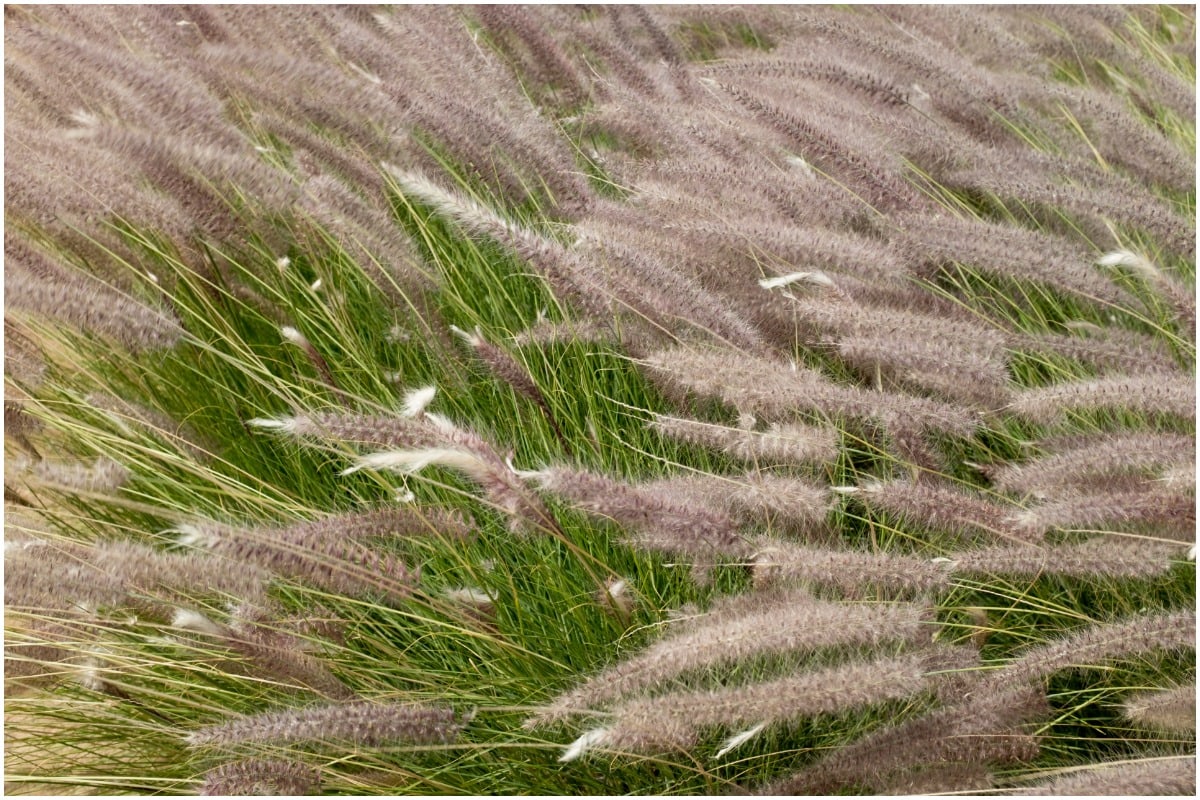
Botanical Name: Pennisetum setaceum
USDA Hardiness Zone*: 4-9
Plant Type: Perennial ornamental grass
Native Area: Southern Asia and Africa
Soil Ph: 5.5-7.0
Known for its skinny leaves and flowery spikes that fade to gold during fall, fountain grass is a popular ornamental plant that has a fountain-like appearance of densely clumped perennial grass, stemming outward from its base. Fountain grass comes in many different colors, though the most common is purple and red fountain grass. It’s a great plant to use as a border for privacy.
When taking care of fountain grass, it is important to cut down its foliage to prevent overgrowing. For best results, the plant must be grown in fertile soil that is well-drained. Fountain grass prefers direct sunlight for at least 6 to 8 hours a day. While considered a drought resistant plant, watering the grass at least once or twice a week, especially during initial planting, will help it adjust to your landscape.
5) Kangaroo Paw
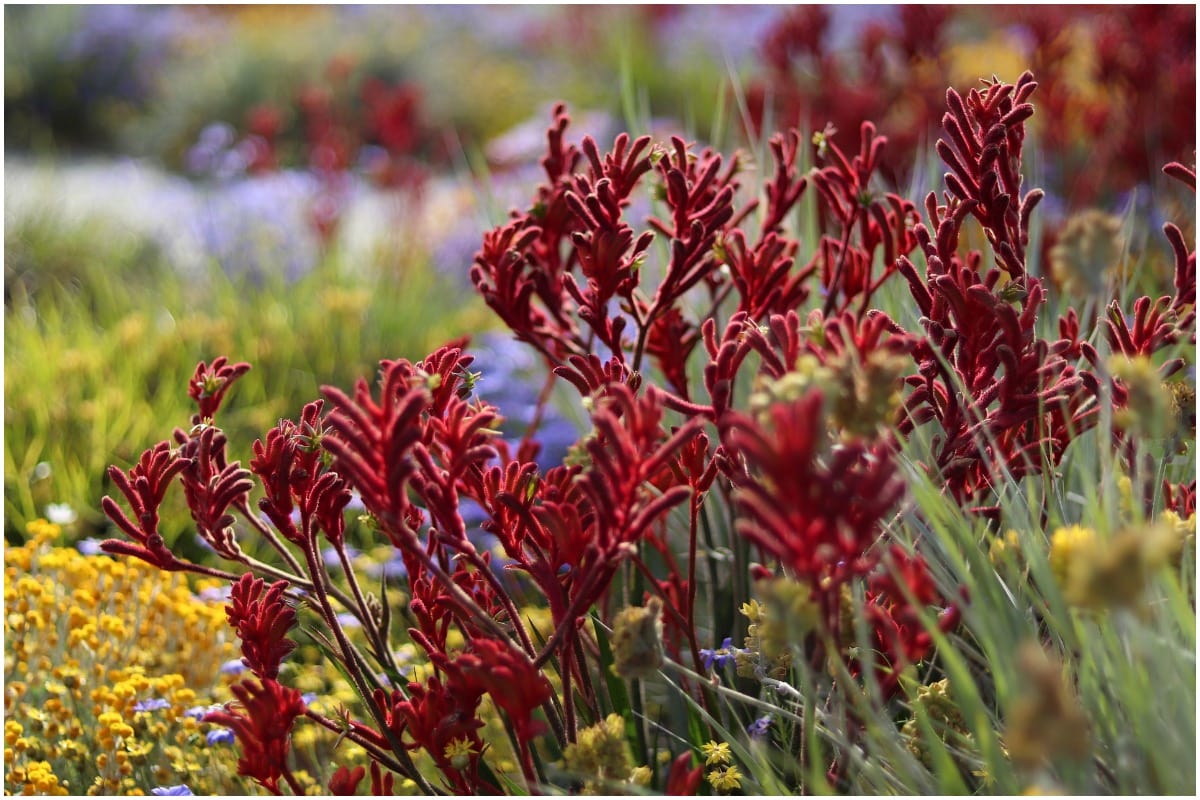
Botanical Name: Anigozanthos flavidus
USDA Hardiness Zone*: 9-11
Plant Type: Herbaceous perennial
Native Area: Australia
Soil Ph: 5.8
Kangaroo Paw is known for its beautiful blooms and visual variety with colors that bloom in red, yellow, orange, or purple. This drought tolerant plant has long, slender leaves that grow on stalks in fan-like rows and are covered in white, velvet-like fuzz.
The kangaroo paw plant can grow in both the ground or pots. However, it must have full sun for at least 6 to 8 hours in order for full bloom to occur. The plant thrives in slightly acidic soil conditions and must be watered moderately as too much water can kill the plant. If you would like to propagate, you can take a seed from the plant, soak it in hot water for 1 to 2 hours, then plant it in warm soil and let it germinate for about six weeks.
6) Lavender

Botanical Name: Lavandula
USDA Hardiness Zones*: 5-9
Plant Type: Herbaceous perennial
Native Area: Europe
Soil Ph: 6.5-7.5
Best grown as annuals or in containers, lavender is a part of the mint family and is known for its sweet floral scent. This drought resistant plant has green foliage and upright flower spikes that are compact and serves as a great companion plant. Although lavender is native to the Mediterranean, there are several types of lavender across the world including English, French, and Spanish Lavender.
The lavender plant does not like high humidity, but it can last for several years if given hot sun and dry, lean soil. You’ll want to plant it in full sunlight as shade can be a detriment to its growth. Lavender is an extremely resilient plant and can go long periods of time without water, but keeping it watered during its first growing season can help it flourish.
7) Pride of Madeira
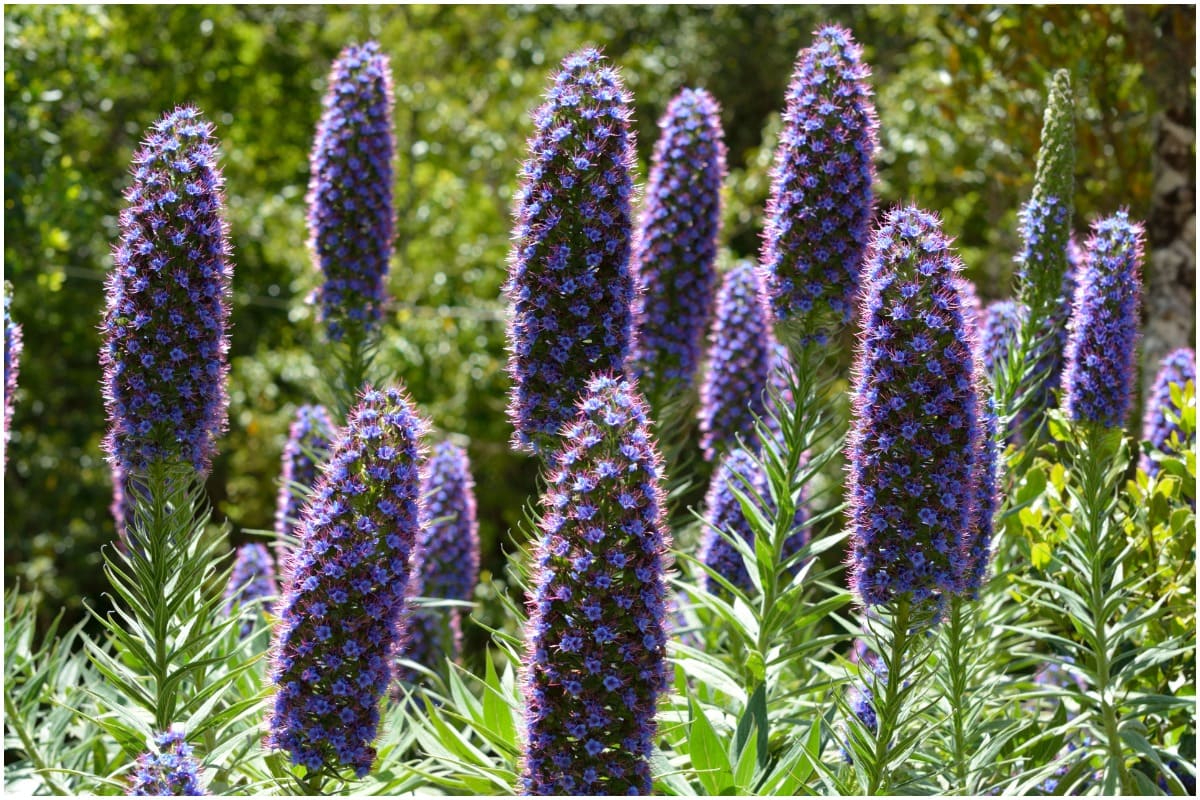
Botanical Name: Echium candicans
USDA Hardiness Zones*: 9-11
Plant Type: Evergreen flowering shrub
Native Area: Canary Island
Soil Ph: 6.6-7.5
This plant is named after its origins, the island of Madeira in the Canary Islands. A biennial plant that forms flowers every other year, the pride of Madeira has sturdy wood stems, green-grey spiky leaves, and a cone-shaped flower that is typically purple. The plant can grow up to 8 tall and 10 feet wide.
Like many drought tolerant plants, the pride of Madeira requires ample amounts of direct sunlight for at least 6 hours. It is also lenient towards different soil types such as clay, sand, or loam. The plant does not require a lot of water, however, if you notice the flowers beginning to droop, watering at the base of the plant will help revive it.
8) Trumpet Vine
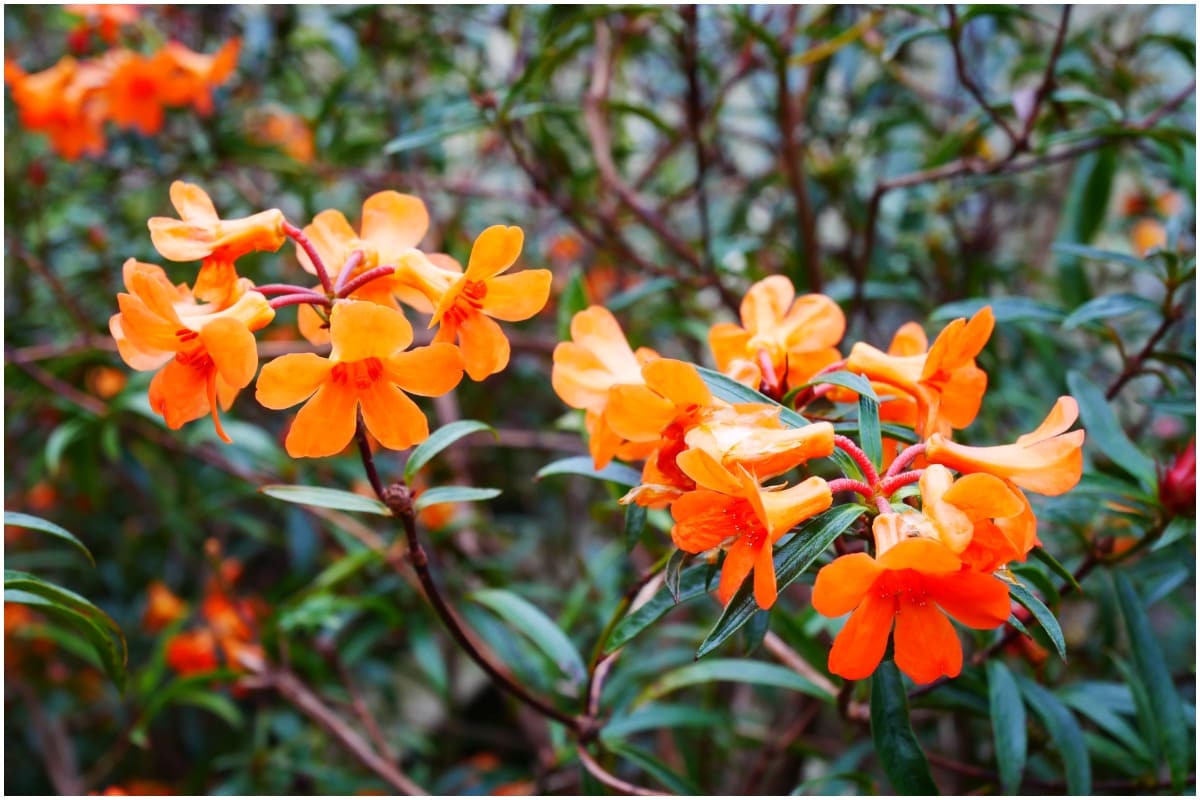
Botanical Name: Campsis radicans
USDA Hardiness Zones*: 4-9
Plant Type: Vine
Native Area: North America
Soil Ph: 6.8-7.2
As reminiscent of its name, trumpet vines are a beautiful trumpet-shaped flower that blossoms a mass of yellow, red, or orange flowers and attracts many animals like hummingbirds. Its thick, woody vines can usually withstand winters and grow up to 30 to 40 feet. This drought tolerant plant can be invasive, but with a little care and pruning, it can be kept under control.
The trumpet vine thrives in both the sun or partial shade, however, it prefers nice-draining soil. Water as needed, as this drought resistant plant does like a moderate amount of moisture. Do not fertilize the plant as it can grow quickly. Make sure you plant it in a suitable location, not too close to your home’s foundation, as it can cause damage.
9) Yarrow

Botanical Name: Achillea millefolium
USDA Hardiness Zones*: 3-9
Plant Type: Herbaceous flowering perennial
Native Area: North Asia, North America, and Europe
Soil Ph: 4.0-8.0
Native to North America, yarrow is a great drought resistant plant that provides a rich source of food for pollinator insects. The plant comes in a variety of shades such as yellow, pink, red, or purple, but can be an invasive grower.
When planting yarrow, choose a location that gets a lot of sun to encourage flower growth. Space the plant 1-2 feet apart as it can grow 2-4 feet tall. Yarrow is not particularly picky when it comes to soil type and can grow in clay, loam, or sand. Yarrow is drought resistant, but if your area gets less than 1 inch of rain per week, give it some water.
Looking to save money on your mortgage?
10) Bougainvillea

Botanical Name: Bougainvillea glabra
USDA Hardiness Zones*: 9-11
Plant Type: Perennial shrub
Native Area: South America
Soil Ph: 5.5-6.0
Bougainvillea is native to South America and named to honor Louis Antoine de Bougainville, who was a French admiral. It can grow 35 inches in length per year and is a fast grower that can climb. Bougainvillea has vibrant colored purple, pink, and orange petals that hide its white and yellow flower blooms.
The bougainvillea plant needs ample care but has to be trimmed to keep it from overgrowing. This is best done during the fall season. When choosing a place to plant it, opt for a location that gets a lot of sun. More light gives the plant brighter hues. Bougainvillea also prefers a location that is well drained and soil that is slightly acidic. Watering varies by season. During the fall, spring, and summer, make sure the soil is slightly moist, and during the winter, make sure it is dry. Too much water can cause root rot and over greenery.
*The USDA Hardiness Zone is a map based on annual minimal water temperature divided into 10-degree F zones. It is the standard by which gardeners determine what plants can grow and thrive across specific locations in the United States.















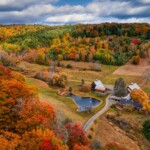



 United States
United States Canada
Canada